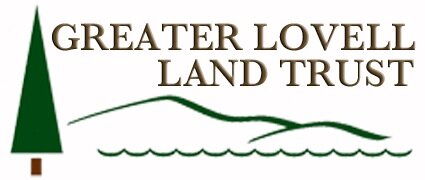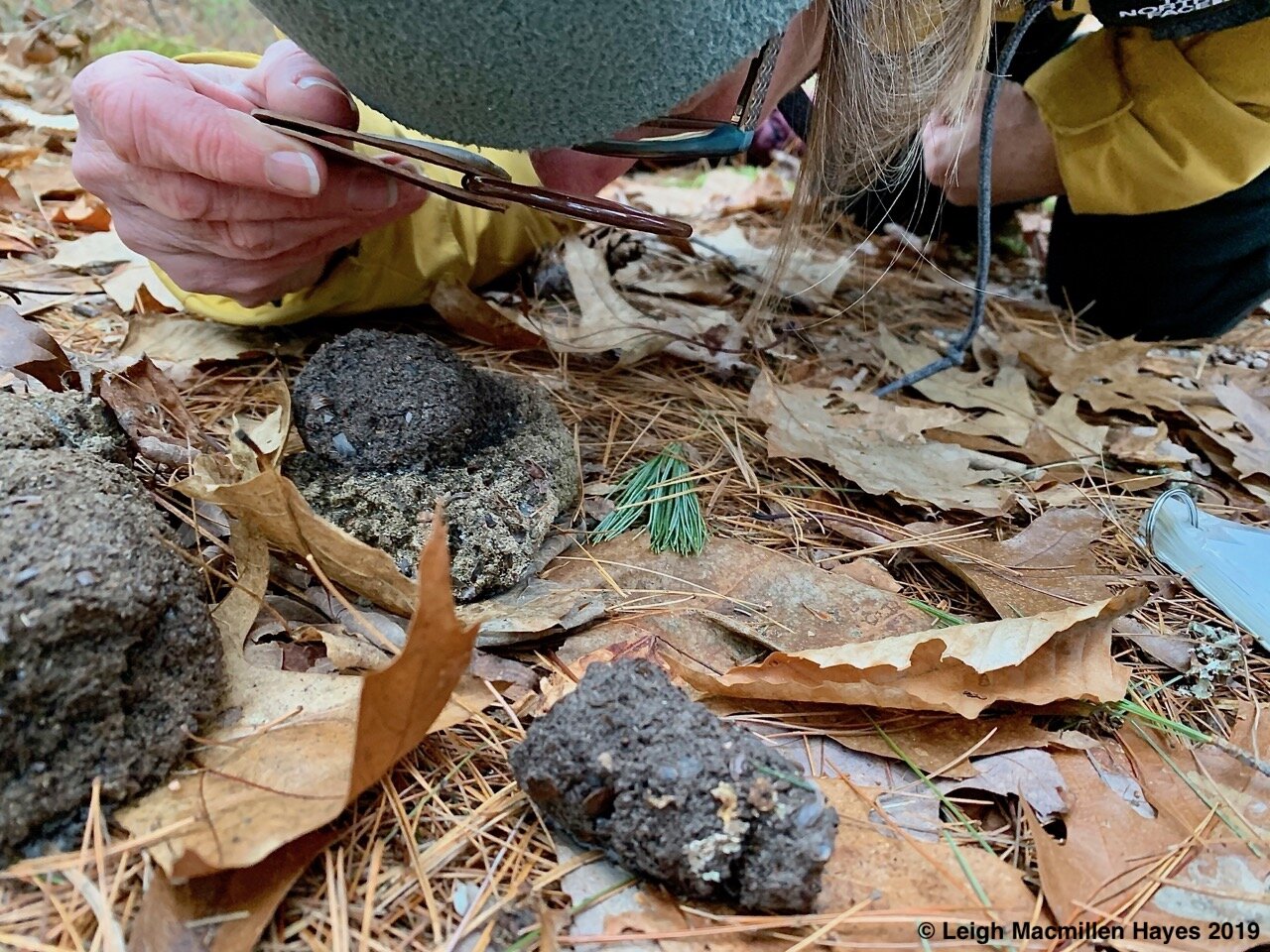It’s an eager group, the Greater Lovell Land Trust’s Tuesday Trackers, and since we had to cancel our expedition two weeks ago, I decided to go forth with today’s plan despite the weather forecast predicting snow.
And so we gathered, most meeting at the library to carpool and another at the trailhead.
Not long into our tramp, we moved off trail and began looking for green-tinted tan milk duds. We’d barely finished describing them to some newbies when one among us spotted a pile. And then, we realized they were everywhere.
Also everywhere, for we were in an early succession forest, were the fleur de lis and teeny seeds of gray and paper birches.
Scanning the area, we recognized the diagonal cut on woody vegetation indicating the source of the hare scat. Once the frost kills succulent plants, a hare’s diet switches to saplings of aspen, birch, maple, willow and cedar. Oh, they’ll browse other species, but these are their favorites and the site we were in offered at least four of the five.
Of course, examining scat is one of a Tracker’s favorite things to do and today was no different. Bob got excited when he saw rainbow reflections in one little specimen. Mind you, we know better than to pick it up for scat can contain parasites, but . . . (don’t do this at home).
Our journey soon found us starring at a much larger scat. Truth be told, Pam had discovered it last week and I joined her the next day to admire it. It is indeed, MUCH larger than the hare scat, because it was created by Ursa Major, a black bear.
The funny thing (at least to us) was that the day Pam spotted this, Mary Holland posted a blog on her Naturally Curious site about black bears scent marking on telephone poles during the non-breeding season and reminding people to bring their bird feeders in at night because it hasn’t yet been cold enough for the bears to hibernate.
It’s often like that if you follow Mary’s blog. She’ll post something that you either just spotted or can expect to see that day or the next. (Thank you, Mary)
Oh how I wish I had a photo of Joan and Bob as they simultaneously spotted the scat after Pam and I had walked a wee bit to the side and paused to chat–ever so nonchalant were we. Their eyes expressed their excitement over such a find.
Again, we know not only not to handle scat, but also not to sniff it. But, we couldn’t resist getting close to see that this hearty specimen was chock full of acorn shells. And so we held our breath as we looked.
We told the newbies that the initiation ceremony included taking a closer look.
And so Joe did.
And Dawn followed suit.
It was almost as if David Brown had used what this specimen to sketch the scat on his Trackard, but . . . his find was full of apples.
I, however, may do the same, for true confession is that I took a wee bit. Well, okay, I took a huge piece. To dry out and add to my collection. All in the name of education.
At last we pulled ourselves away and continued on in search of more mammal sign, which we found in the form of a small hole with a clean dooryard. Where there is one hole, there is usually another.
Our curiosity was satisfied when it was spotted not too far away and then we actually found a third on the other side of the path and suspected that a chipmunk had a castle below and knew how to avoid sky space above the trail. Sky space can be hazardous to a little brown thing if a bird of prey spots it and trails often create that opening that the LBTs fear.
Because we are who we are, and curious about every little thing, it wasn’t just mammal sign that captured our attention. There were sawfly cocoons to examine.
And then, the leaf that dangled from a hemlock. All we could think of was that a deciduous leaf had landed on the conifer and a leafroller insect took advantage of the opportunity to create its cocoon in situ. Can you see the threads that hold the leaf’s petiole or stalk to the hemlock needles?
There were other danglers as well, all befitting the current season for this was the trail that the GLLT’s Nature Explorers, a group of homeschool families, had used to decorate a Christmas tree last year for the Maine/New Hampshire Christmas Tree Quest.
This year’s tree is located along the Homestead Trail at the GLLT’s Heald and Bradley Ponds Reserve, so be sure to get your quest on and go take a look.
And speaking of Christmas, snowflakes began falling as we made our way and we paused for a few moments to admire how they’d gathered on spider webs and danced in the slight breeze.
One of our other great finds and we found many, was the tubular shape of pine needles, which had been constructed by a pine tube moth caterpillar, Argyrotaenia pinatubana. The caterpillar had used a bunch of needles to form its hollow cocoon, binding them together with silk and munching on the ends of its winter home.
Later in the day, when I was alone, I discovered more tubes on pines and while I was looking I spied movement created by Tetragnatha viridis, the green long-jawed orb weaver. Do you see it? The green color helps it camouflage amongst pine needles, its usual habitat.
I bet you can see it now.
I only wish I’d been able to spy the spider when I was with this crew for we chatted about how after a winter rain droplets decorating webs make us realize how active spiders can be despite the temperature.
Today’s crew included Joan, Joe, Pam, Dawn, and Bob, and I suspect we all drove home with smiles in our hearts as we reflected upon the discoveries we’d made and fun we’d had during our time together.
We didn’t go over the river, but we certainly did go through the woods, laughing all the way, ho, ho, ho.




















